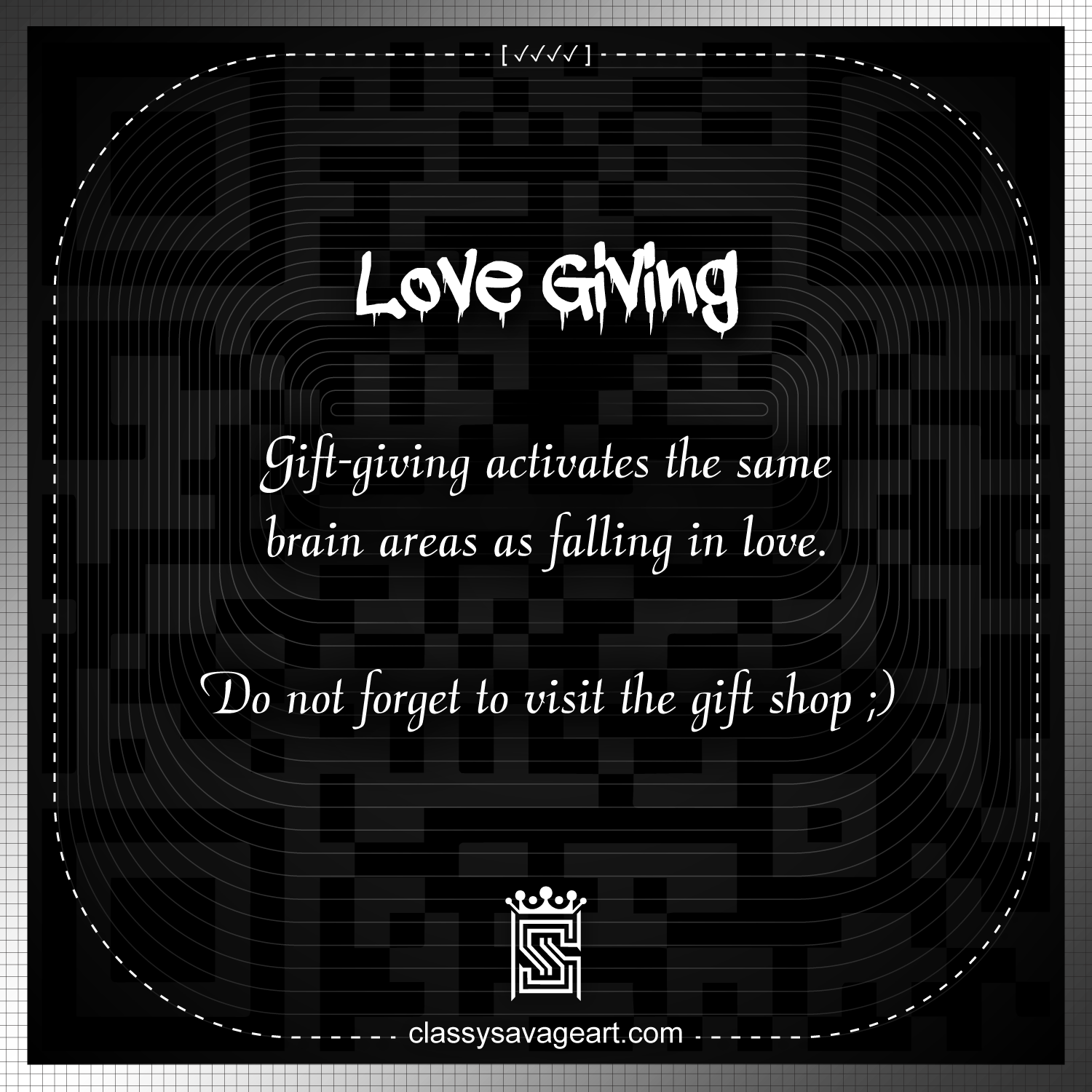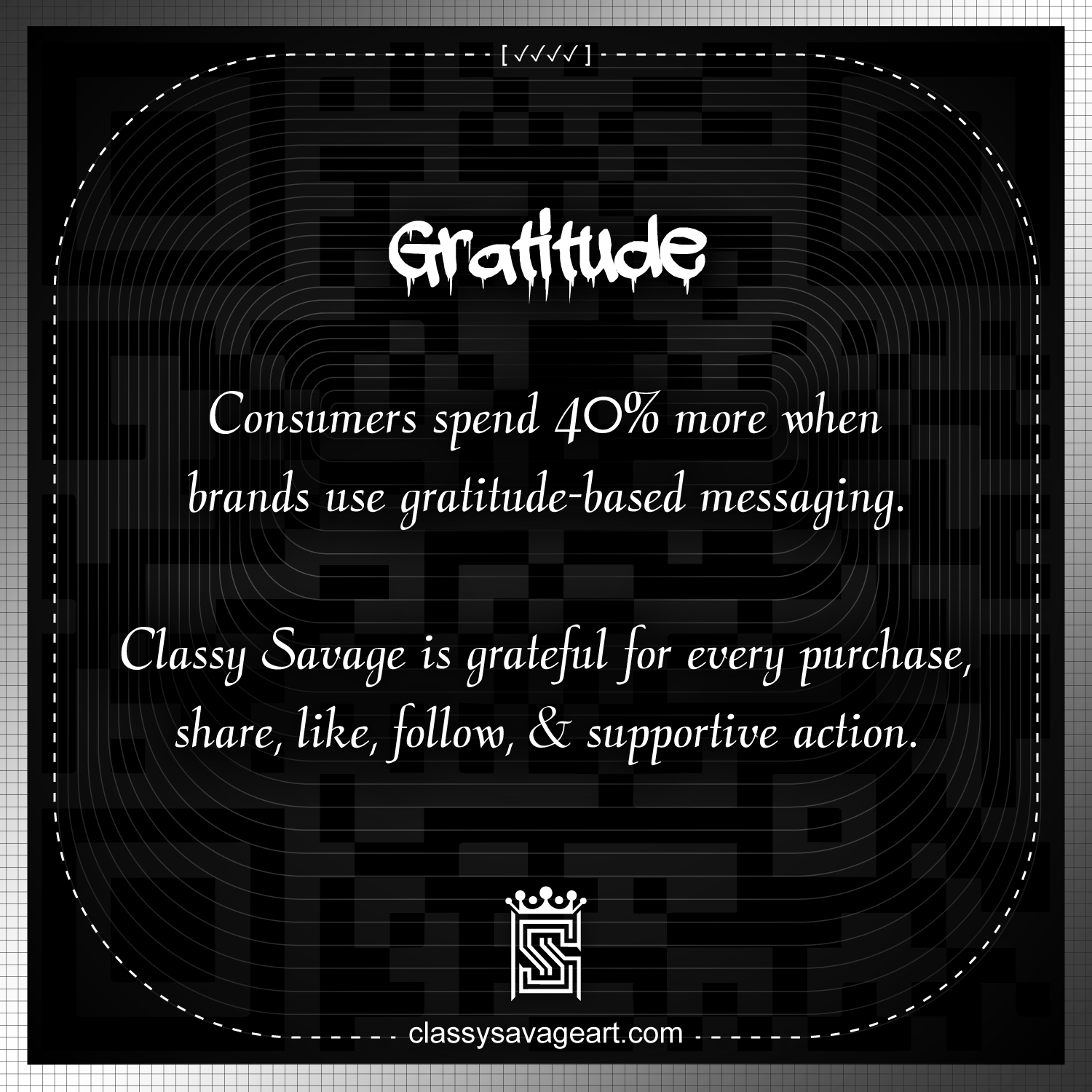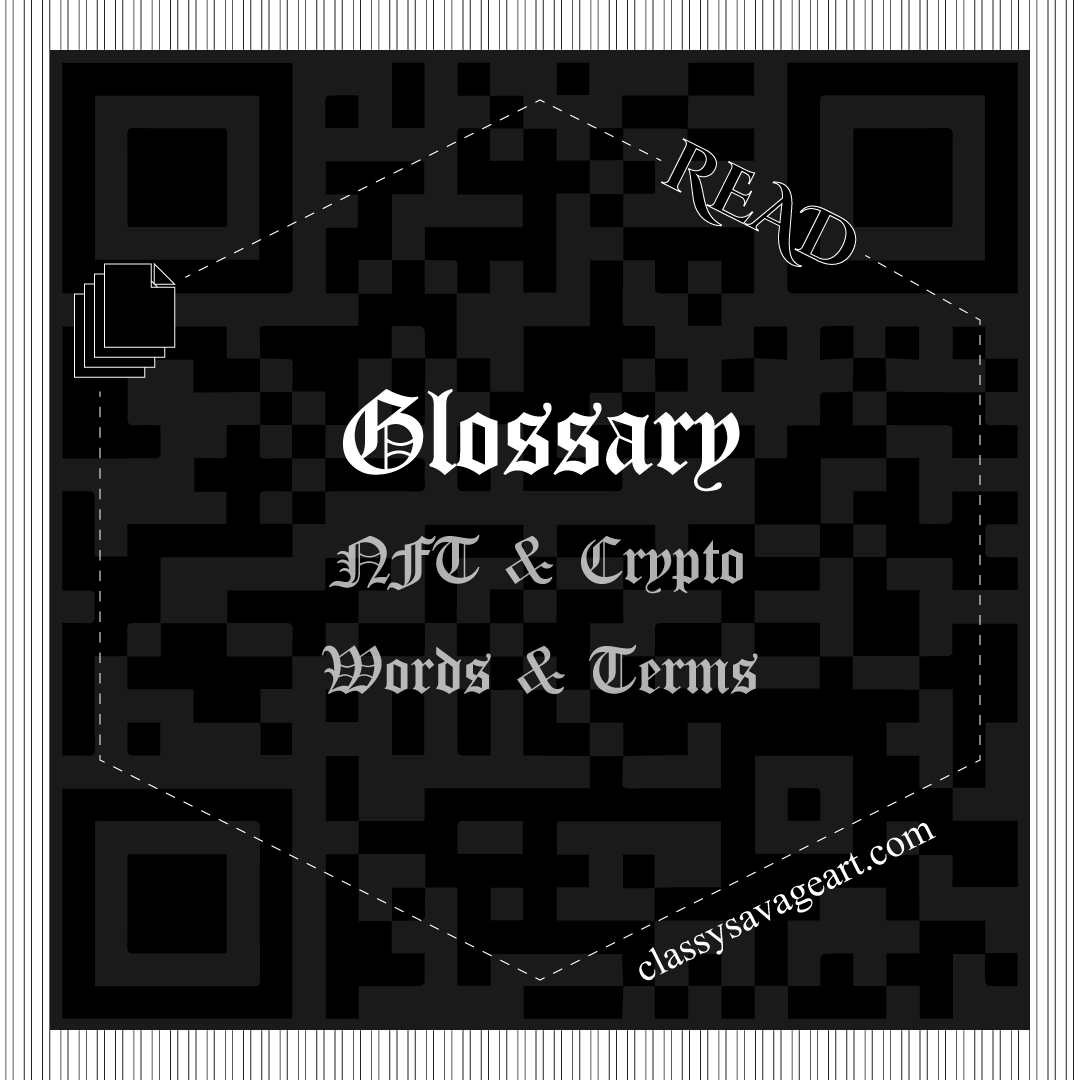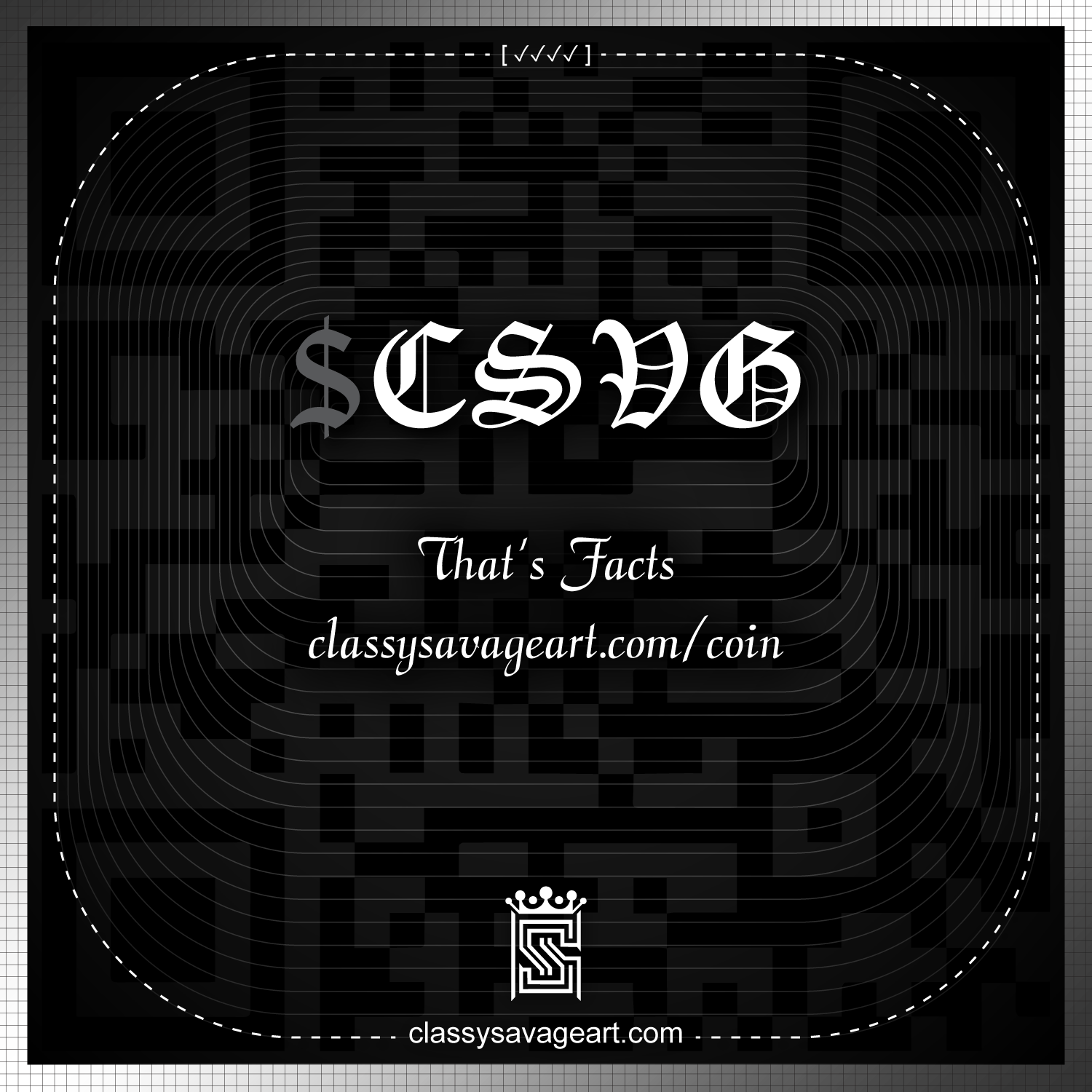
To Be Re-Minted Pending Lawsuit vs. Coinbase
Read More @ https://russellrope.com/real-legaltrillog-revolution
$CSVG Tokenomics, White Paper, etc. (click here)

To Be Re-Minted Pending Lawsuit vs. Coinbase
Read More @ https://russellrope.com/real-legaltrillog-revolution
$CSVG Tokenomics, White Paper, etc. (click here)

To Be Re-Minted Pending Lawsuit vs. Coinbase
Read More @ https://russellrope.com/real-legaltrillog-revolution
$CSVG Tokenomics, White Paper, etc. (click here)

Altcoin: Any cryptocurrency other than Bitcoin. These can include Ethereum (ETH), Polygon (MATIC), Solana (SOL), and many others.
Blockchain: A decentralized, distributed ledger technology that records transactions across multiple computers in a way that ensures the security, transparency, and immutability of the data.
Blockchains: Blockchain networks such as Tron, Stellar, NEO, Corda, Ethereum, MultiChain, EOS, IBM Blockchain, Hyperledger Fabric, OpenChain, Quorum, & NEM.
Bitcoin: The first and most well-known cryptocurrency, created by an anonymous person or group of people using the pseudonym Satoshi Nakamoto in 2009.
Crypto Art: Digital art that is tokenized and sold as an NFT.
Cryptocurrency: A digital or virtual currency that uses cryptography for security and operates independently of a central bank. Bitcoin is the most well-known example.
Cryptokitties: One of the earliest NFT-based games, where users can buy, sell, and breed digital cats on the Ethereum blockchain.
Crypto Wallet: Software or hardware that allows users to store and manage their cryptocurrencies.
Cryptocurrency Exchange: Platforms where cryptocurrencies can be bought, sold, or traded for other digital or traditional currencies.
Cryptocurrency Mining: The process of validating transactions and adding them to the blockchain, typically using powerful computers to solve complex mathematical problems.
Cryptopunk: A series of 10,000 unique collectible characters created as NFTs on the Ethereum blockchain.
Decentralized Autonomous Organization (DAO): An organization represented by rules encoded as a computer program that is transparent, controlled by organization members, and not influenced by a central government.
Drop (NFT Drop):Â The release of a new collection of non-fungible tokens (NFTs) by an artist, brand, or creator, typically announced in advance and made available for purchase or distribution at a specific time and through designated platforms.
Ethereum: A decentralized platform that enables smart contracts and decentralized applications (DApps) to be built and operated without any downtime, fraud, control, or interference from a third party.
Marketplace: A platform where NFTs and cryptocurrencies are bought, sold, and traded.
Meme Coin: A type of cryptocurrency usually created with humorous or satirical intent, often featuring internet memes and cultural references, and typically lacking serious underlying technology or utility.
Minting: The process of creating or issuing new NFTs, often involving the creation of unique digital assets and recording them on a blockchain.
Non-Fungible Token (NFT): A digital asset that represents ownership or proof of authenticity of a unique item or piece of content, typically stored on a blockchain.
Smart Contract: A self-executing contract with the terms of the agreement between buyer and seller being directly written into code. Smart contracts automatically execute and enforce when predefined conditions are met.
Tokenization: The process of converting rights to an asset into a digital token on a blockchain.
Utility Token: A type of cryptocurrency that provides users with access to a product or service, usually within a blockchain-based platform.
Web3: A vision of the internet that is decentralized, where users have more control over their data and interactions, often enabled by blockchain technology.
This glossary includes most common terms relevant to NFTs, cryptocurrencies, and blockchain technology, & was mostly written by Ai.
Original Genius (“OG”)
Also READ
@Â https://classysavageart.com/cyptocurrency_intro-guide

To Be Re-Minted Pending Lawsuit vs. Coinbase
Read More @ https://russellrope.com/real-legaltrillog-revolution
$CSVG Tokenomics, White Paper, etc. (click here)

Altcoin: Any cryptocurrency other than Bitcoin. These can include Ethereum (ETH), Polygon (MATIC), Solana (SOL), and many others.
Blockchain: A decentralized, distributed ledger technology that records transactions across multiple computers in a way that ensures the security, transparency, and immutability of the data.
Blockchains: Blockchain networks such as Tron, Stellar, NEO, Corda, Ethereum, MultiChain, EOS, IBM Blockchain, Hyperledger Fabric, OpenChain, Quorum, & NEM.
Bitcoin: The first and most well-known cryptocurrency, created by an anonymous person or group of people using the pseudonym Satoshi Nakamoto in 2009.
Crypto Art: Digital art that is tokenized and sold as an NFT.
Cryptocurrency: A digital or virtual currency that uses cryptography for security and operates independently of a central bank. Bitcoin is the most well-known example.
Cryptokitties: One of the earliest NFT-based games, where users can buy, sell, and breed digital cats on the Ethereum blockchain.
Crypto Wallet: Software or hardware that allows users to store and manage their cryptocurrencies.
Cryptocurrency Exchange: Platforms where cryptocurrencies can be bought, sold, or traded for other digital or traditional currencies.
Cryptocurrency Mining: The process of validating transactions and adding them to the blockchain, typically using powerful computers to solve complex mathematical problems.
Cryptopunk: A series of 10,000 unique collectible characters created as NFTs on the Ethereum blockchain.
Decentralized Autonomous Organization (DAO): An organization represented by rules encoded as a computer program that is transparent, controlled by organization members, and not influenced by a central government.
Drop (NFT Drop):Â The release of a new collection of non-fungible tokens (NFTs) by an artist, brand, or creator, typically announced in advance and made available for purchase or distribution at a specific time and through designated platforms.
Ethereum: A decentralized platform that enables smart contracts and decentralized applications (DApps) to be built and operated without any downtime, fraud, control, or interference from a third party.
Marketplace: A platform where NFTs and cryptocurrencies are bought, sold, and traded.
Meme Coin: A type of cryptocurrency usually created with humorous or satirical intent, often featuring internet memes and cultural references, and typically lacking serious underlying technology or utility.
Minting: The process of creating or issuing new NFTs, often involving the creation of unique digital assets and recording them on a blockchain.
Non-Fungible Token (NFT): A digital asset that represents ownership or proof of authenticity of a unique item or piece of content, typically stored on a blockchain.
Smart Contract: A self-executing contract with the terms of the agreement between buyer and seller being directly written into code. Smart contracts automatically execute and enforce when predefined conditions are met.
Tokenization: The process of converting rights to an asset into a digital token on a blockchain.
Utility Token: A type of cryptocurrency that provides users with access to a product or service, usually within a blockchain-based platform.
Web3: A vision of the internet that is decentralized, where users have more control over their data and interactions, often enabled by blockchain technology.
This glossary includes most common terms relevant to NFTs, cryptocurrencies, and blockchain technology, & was mostly written by Ai.
Original Genius (“OG”)
Also READ
@Â https://classysavageart.com/cyptocurrency_intro-guide

Altcoin: Any cryptocurrency other than Bitcoin. These can include Ethereum (ETH), Polygon (MATIC), Solana (SOL), and many others.
Blockchain: A decentralized, distributed ledger technology that records transactions across multiple computers in a way that ensures the security, transparency, and immutability of the data.
Blockchains: Blockchain networks such as Tron, Stellar, NEO, Corda, Ethereum, MultiChain, EOS, IBM Blockchain, Hyperledger Fabric, OpenChain, Quorum, & NEM.
Bitcoin: The first and most well-known cryptocurrency, created by an anonymous person or group of people using the pseudonym Satoshi Nakamoto in 2009.
Crypto Art: Digital art that is tokenized and sold as an NFT.
Cryptocurrency: A digital or virtual currency that uses cryptography for security and operates independently of a central bank. Bitcoin is the most well-known example.
Cryptokitties: One of the earliest NFT-based games, where users can buy, sell, and breed digital cats on the Ethereum blockchain.
Crypto Wallet: Software or hardware that allows users to store and manage their cryptocurrencies.
Cryptocurrency Exchange: Platforms where cryptocurrencies can be bought, sold, or traded for other digital or traditional currencies.
Cryptocurrency Mining: The process of validating transactions and adding them to the blockchain, typically using powerful computers to solve complex mathematical problems.
Cryptopunk: A series of 10,000 unique collectible characters created as NFTs on the Ethereum blockchain.
Decentralized Autonomous Organization (DAO): An organization represented by rules encoded as a computer program that is transparent, controlled by organization members, and not influenced by a central government.
Drop (NFT Drop):Â The release of a new collection of non-fungible tokens (NFTs) by an artist, brand, or creator, typically announced in advance and made available for purchase or distribution at a specific time and through designated platforms.
Ethereum: A decentralized platform that enables smart contracts and decentralized applications (DApps) to be built and operated without any downtime, fraud, control, or interference from a third party.
Marketplace: A platform where NFTs and cryptocurrencies are bought, sold, and traded.
Meme Coin: A type of cryptocurrency usually created with humorous or satirical intent, often featuring internet memes and cultural references, and typically lacking serious underlying technology or utility.
Minting: The process of creating or issuing new NFTs, often involving the creation of unique digital assets and recording them on a blockchain.
Non-Fungible Token (NFT): A digital asset that represents ownership or proof of authenticity of a unique item or piece of content, typically stored on a blockchain.
Smart Contract: A self-executing contract with the terms of the agreement between buyer and seller being directly written into code. Smart contracts automatically execute and enforce when predefined conditions are met.
Tokenization: The process of converting rights to an asset into a digital token on a blockchain.
Utility Token: A type of cryptocurrency that provides users with access to a product or service, usually within a blockchain-based platform.
Web3: A vision of the internet that is decentralized, where users have more control over their data and interactions, often enabled by blockchain technology.
This glossary includes most common terms relevant to NFTs, cryptocurrencies, and blockchain technology, & was mostly written by Ai.
Original Genius (“OG”)
Also READ
@Â https://classysavageart.com/cyptocurrency_intro-guide

Altcoin: Any cryptocurrency other than Bitcoin. These can include Ethereum (ETH), Polygon (MATIC), Solana (SOL), and many others.
Blockchain: A decentralized, distributed ledger technology that records transactions across multiple computers in a way that ensures the security, transparency, and immutability of the data.
Blockchains: Blockchain networks such as Tron, Stellar, NEO, Corda, Ethereum, MultiChain, EOS, IBM Blockchain, Hyperledger Fabric, OpenChain, Quorum, & NEM.
Bitcoin: The first and most well-known cryptocurrency, created by an anonymous person or group of people using the pseudonym Satoshi Nakamoto in 2009.
Crypto Art: Digital art that is tokenized and sold as an NFT.
Cryptocurrency: A digital or virtual currency that uses cryptography for security and operates independently of a central bank. Bitcoin is the most well-known example.
Cryptokitties: One of the earliest NFT-based games, where users can buy, sell, and breed digital cats on the Ethereum blockchain.
Crypto Wallet: Software or hardware that allows users to store and manage their cryptocurrencies.
Cryptocurrency Exchange: Platforms where cryptocurrencies can be bought, sold, or traded for other digital or traditional currencies.
Cryptocurrency Mining: The process of validating transactions and adding them to the blockchain, typically using powerful computers to solve complex mathematical problems.
Cryptopunk: A series of 10,000 unique collectible characters created as NFTs on the Ethereum blockchain.
Decentralized Autonomous Organization (DAO): An organization represented by rules encoded as a computer program that is transparent, controlled by organization members, and not influenced by a central government.
Drop (NFT Drop):Â The release of a new collection of non-fungible tokens (NFTs) by an artist, brand, or creator, typically announced in advance and made available for purchase or distribution at a specific time and through designated platforms.
Ethereum: A decentralized platform that enables smart contracts and decentralized applications (DApps) to be built and operated without any downtime, fraud, control, or interference from a third party.
Marketplace: A platform where NFTs and cryptocurrencies are bought, sold, and traded.
Meme Coin: A type of cryptocurrency usually created with humorous or satirical intent, often featuring internet memes and cultural references, and typically lacking serious underlying technology or utility.
Minting: The process of creating or issuing new NFTs, often involving the creation of unique digital assets and recording them on a blockchain.
Non-Fungible Token (NFT): A digital asset that represents ownership or proof of authenticity of a unique item or piece of content, typically stored on a blockchain.
Smart Contract: A self-executing contract with the terms of the agreement between buyer and seller being directly written into code. Smart contracts automatically execute and enforce when predefined conditions are met.
Tokenization: The process of converting rights to an asset into a digital token on a blockchain.
Utility Token: A type of cryptocurrency that provides users with access to a product or service, usually within a blockchain-based platform.
Web3: A vision of the internet that is decentralized, where users have more control over their data and interactions, often enabled by blockchain technology.
This glossary includes most common terms relevant to NFTs, cryptocurrencies, and blockchain technology, & was mostly written by Ai.
Original Genius (“OG”)
Also READ
@Â https://classysavageart.com/cyptocurrency_intro-guide